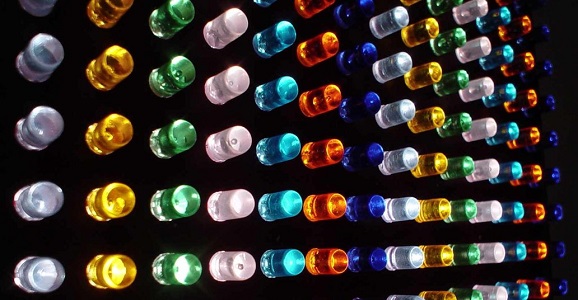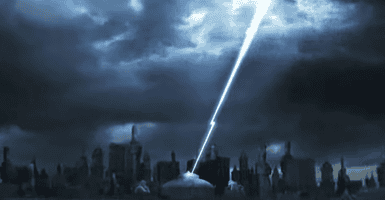Chinese Scientists Create Cheap Wireless Internet Using LED Lightbulbs
This article is more than 2 years old
 Horror films of the future, take note. While such overused tropes as “falling down while being chased” and “the car not starting when it’s most important” will probably always exist, along with being unable to get a decent signal on a cell phone, there’s a good chance the future will allow for characters to turn on a flashlight that would transmit a WiFi signal, which they could use to get on their phones and message someone on Facebook for help. Not that someone will have to be chased by a homicidal maniac in order to use it, but it’s always nice not to take things for granted.
Horror films of the future, take note. While such overused tropes as “falling down while being chased” and “the car not starting when it’s most important” will probably always exist, along with being unable to get a decent signal on a cell phone, there’s a good chance the future will allow for characters to turn on a flashlight that would transmit a WiFi signal, which they could use to get on their phones and message someone on Facebook for help. Not that someone will have to be chased by a homicidal maniac in order to use it, but it’s always nice not to take things for granted.
Chinese scientists from the Fudan University and the Shanghai Institute of Technical Physics of the Chinese Academy of Sciences were successful in their recent attempts at creating LiFi, a cost-effective way of transferring wireless Internet signals through light bulbs rather than dedicated routers. The research team, led by Fudan information technology professor Chi Nan, will display their efforts via 10 sample LiFi kits at the Chinese International Industry Fair that will be held in Shanghai on November 5th.
The technology, still in its developmental stages, utilizes one-watt LED lightbulbs with embedded microchips inside that allow for 150 MBps data rates, faster than the average Chinese broadband speed, and can connect four computers to its signal.
So why focus on light-based Internet rather than WiFi? For one, it’s extremely efficient, needing only the light to be on for it to work. Also, it will save a lot of money and power, should it become the normal connection method.
Explaining how WiFi equipment tends to be expensive and not very energy efficient, Chi also spoke of cell towers. “As for cell phones,” she said, “millions of base stations have been established around the world to strengthen the signal but most of the energy is consumed on their cooling systems. The energy utilization rate is only 5 percent.” While that number probably isn’t entirely accurate, especially in places that are using more eco-friendly cell towers, it still highlights a problem that LiFi doesn’t have to deal with at all, as bulbs cool naturally once they’re not in use. I doubt I have to explain how strong a building’s signal could potentially be with LiFi bulbs lining the walls. Even Christmas trees could be major Internet hubs. A jump in Internet addiction seems inevitable.
This all sounds a lot more reliable than recent plans on utilizing unused white space on the frequency spectrum for Internet signals. But then I’m the guy for whom the Internet likes to go on hiatus, so reliability issues really aren’t up my alley. I might have something in common with the girl in the video below, not that I’m actively trying to make out with my ISP techs.












